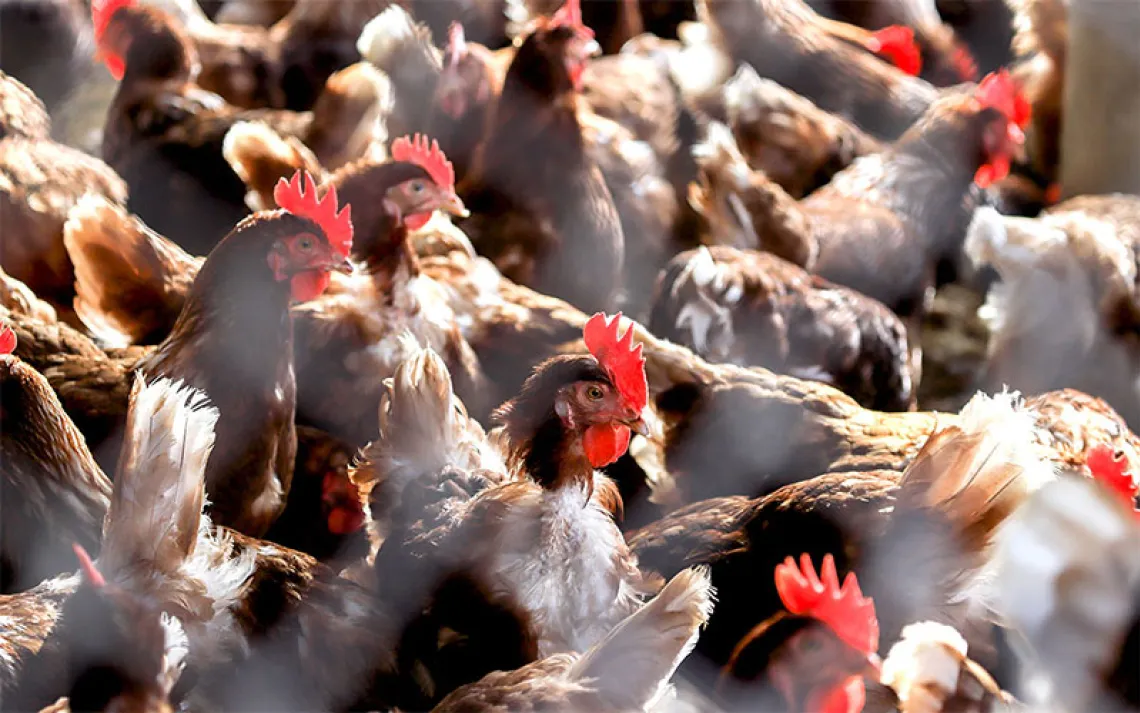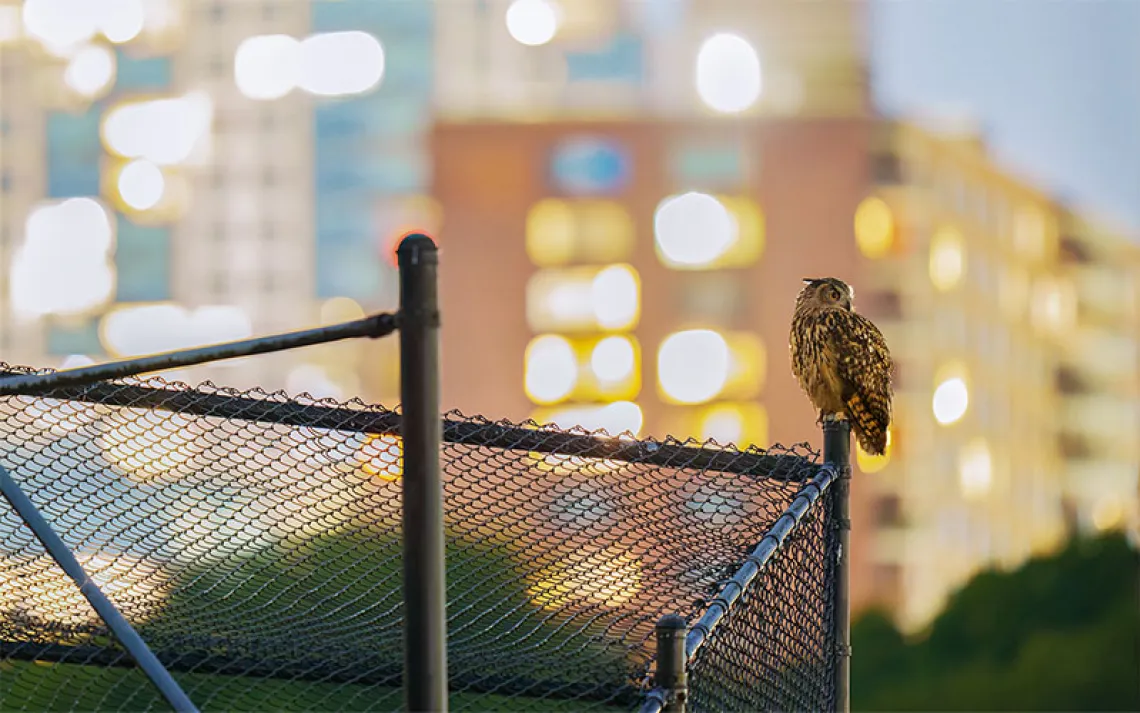Study Suggests That Birds Expand Their Range When Humans Shrink Theirs
A group of scientists looked at bird behavior during the COVID-19 lockdowns

Photo by mirceax
In spring 2020, faced with the prospect of being stuck inside for months on end, people found comfort in memes. “Nature is healing” was one of the most popular; along with the catchphrase came pictures of elephants getting drunk on corn wine and wild boars roaming the streets of Italy. Some of these stories turned out to be fiction, but the idea took hold among those searching for a silver lining to pandemic lockdowns.
Inspired in part by these reports, a group of scientists decided to investigate whether birds, like other animals, had moved around more freely when fewer humans were out and about. The study, published in September in Science Advances, found that a large number of bird species in North America expanded their range during the height of COVID-19 lockdowns.
“The pandemic offered this—hopefully once-in-a-lifetime—opportunity to look at what happens when the world slows down,” says Michael Schrimpf, an ecologist at the University of Manitoba and lead author of the study. Using cellphone tracking data provided by Google, Schrimpf and his coauthors compared the drop in traffic during March to June of 2020 with bird counts from eBird, an online database where birdwatchers record the birds they’ve seen.
Eighty percent of the 82 birds in the study showed some kind of response to the lockdown. Some became less easy to find, like the downy woodpecker and the American coot, and a few stoic birds, like rock pigeons and house sparrows, didn’t seem affected. Not every bird is the same, Schrimpf says. “Each one has its own peculiar relationship with humans.”
But in most cases, bird counts went up, suggesting that birds were spreading out and re-entering the places where people were absent. Among this group were native North American sparrows and warblers, which together account for almost half of the roughly 3 billion birds that have disappeared since 1970. The study does not suggest that lockdowns increased the number of birds, but rather that birds were avoiding some places before the pandemic.
So what, exactly, keeps the birds away in normal circumstances? Schrimpf’s study didn’t answer this question, but there are some likely explanations, such as air and noise pollution. Sound from traffic can reach birds more than a kilometer from a busy road. “It’s this chronic disturbance that’s changing the perceptual world of animals that are listening,” says Clinton Francis, an ecologist at California Polytechnic State University who was not involved in the study. The noise makes it harder for birds to communicate and to listen for prey and predators, he says. Francis says the study corroborates effects he’s seen on smaller scales.
Without a doubt, birds benefit from more space. More habitat means more room for hunting, mating, and raising chicks, and during the migration season, birds need a place to rest. Habitat loss is the number one reason for animal declines worldwide. Sometimes this means cutting down trees in the rainforest, but there’s more to it. Noise, air pollution, and other factors can also reduce the amount of suitable bird habitat.
“When I look out my window, I see a lot of grass and trees, and it looks like it's good habitat for birds. But from the perspective of the birds, that might not be the case if there's a lot of traffic in the area,” says Nicola Koper, an ecologist at the University of Manitoba and coauthor of the study.
Take the ruby-throated hummingbird. When people went into lockdown, the tiny, shiny, red-and-green birds became more common in the vicinity of airports. It isn’t clear exactly why, but the results highlighted an important point for Koper. “They can use all sorts of parks and gardens, flowers, and flowering shrubs in the whole area within tens of kilometers of the airport.” Airports are especially busy hubs of human activity, and all that bustle affects hummingbirds for miles around.

Sign up to receive Sierra News & Views
Get articles like this one sent directly to your inbox weekly.
With this action you affirm you want to receive Sierra Club communications and may vote on policy designated by the Sierra Club Board.
There was another result that surprised Koper. The American robin, a familiar sight for birders and nonbirders alike, was one of the birds that expanded its territory during the pandemic. “We see them all over the cities ... and I think because of that, we just have assumed that they're fine with people.”
From a conservation perspective, birds moving back into human-occupied spaces isn’t necessarily a good thing, says Schrimpf. Even with fewer people in the picture, urban spaces can be dangerous for birds. They can fly into windows, get hit by cars, and be mauled by free-ranging cats. Ground-level ozone, which forms when sunlight hits pollution from smokestacks and car tailpipes, is directly related to bird declines, according to a study from last year.
Nevertheless, the study could be a cause for hope. It shows that certain changes in society can make an immediate difference, says Clinton Francis. Governments can build more sound barrier walls around highways and find other ways to reduce noise from traffic. People can switch to quieter electric cars and get rid of their leaf blowers, and they may be rewarded with more birds in their backyard.
There was a surge of interest in birding during the pandemic. The Indiana Audubon Society’s membership increased about 45 percent last year, and a year of doing bird events over Zoom has shifted the organization’s goals, says Sam Warren, outreach and communications manager. “We're starting to focus more on what you can do near your house, or on finding places in the city near you.”
Even better, people can get the birds to come to them. “If I don't have to commute to work, or if I can plant some native plants in my backyard ... it's going to help them. And in the long run, I’ll also see more birds.”
 The Magazine of The Sierra Club
The Magazine of The Sierra Club



